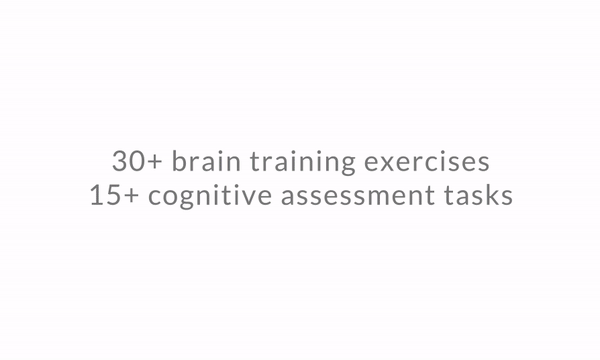
Daydreaming: what is it, why do we do it, can it be dangerous?
You are now entering Lala land (no, not the one with Ryan Gosling and Emma Stone, unfortunately) but a land where it’s all about you. We have all had those moment sitting in class, at work and all of a sudden 10 minutes have gone by and you have no idea what actually happened. Your mind has taken over and you were in a haze or maybe even a daydream. Where did your mind go in those 10 minutes? Did you see yourself in a perfect fantasy? What is Daydreaming? Does it happen to everyone? Daydreaming is a part of everyday life!
What is a daydream?
A daydream is when your mind wanders and your attention shifts from the task at hand whether it be physical or mental, to a place that is entirely your own. Daydreams consist of little videos of yourself in past, future and present events. What you wanted to happen, replaying certain events over and over again, daydream about future events where you see yourself in 10 years and even daydreaming about what you will be doing later tonight. It has been noted that about 30 to 47% of our conscious day is spent spacing out, drifting and daydreaming.

Men who daydream frequently and women who daydream vividly tend to be less satisfied in their life. But if you daydream about family and friends, people report higher levels of satisfaction in their daily lives. It has been found that there are two types of daydreams: positive-construction daydreams and dysphoric daydreams.
- Positive-constructive daydreams are usually upbeat and include imaginative thoughts.
- Dysphoric daydreams include visions of failure and punishment.
These two common themes of the conquering hero and the suffering martyr are experienced differently by men and women. Men are usually daydreaming about the playing the conquering hero while women are daydreaming about being the suffering martyr. It is human nature for us to daydream more when we are stressed, bored, tired, or in a hectic environment. But on the other hand, the only time where we do not day dream is during sex. All of our attention and focus is at that moment, however, this does not mean you cannot fantasize which is different from daydreaming.
“Imagination is the only weapon in the war against reality.” -Lewis Carroll, Alice in Wonderland
Why do we daydream?
Daydreams allow your mind to run freely and even increases productivity in some cases. Remember in class there was that one kid who was doodling or staring out the window and the teacher would usually yell at them for not paying attention? Well, it turns out, these kids might have had the right idea. Daydreaming enhances creativity which is why you have an ah-ha moment and sudden insight about a situation. Daydreaming allows your to uncover thoughts and ideas you did not realize you even had and looks underneath the surface thoughts. Your mind in a way becomes unhinged is allowed to roam freely.
Daydreaming is a great exercise because it gives you an outlet to imagine scenarios without risk or any real consequences. When you daydream, you can make new associations and connections from your conscious mind to unconscious thoughts which can help you in a situation that you have been thinking about for a while. When you daydream you escape your reality even if only for a short amount of time. Daydreaming is an essential cognitive tool to help us explore our inner experiences.

Much like nighttime dreaming, daydreaming can also help the brain consolidate learning. Daydreaming may also help people to sort through problems and achieve success. Researchers found that different brain areas are activated when daydreaming that are compatible with those associated with problem-solving.
Daydreaming Purpose
Daydreaming has been shown that it can serve an evolutionary purpose. The more we replay an event and think about the variables that can affect an event, the more practice and more comfortable we get with the idea of something similar. Daydreaming can be a soothing method to get someone more comfortable with something. For example, in Grey’s Anatomy episode, “Magic Moment” the team of doctors practices a very important surgery. This is similar to what happens when we daydream. It is one big dress rehearsal for the real show, your life.

Daydreaming also assists us in making moral decisions. It also gives us an outlet to plan as well as problem-solving in a safe space. A possible explanation as to why we daydream is that we are trying to understand others’ thoughts. We do not know what others are thinking but we can daydream about what we think they are thinking or even about how we want them to this.
The neurological systems behind daydreaming
When you daydream your brain is actually using a different network called the default network. This network includes areas of the brain such as the medial prefrontal cortex which helps to imagine ourselves and the thoughts and feelings of others, the posterior cingulate cortex which shows personal memories from the brain, and the parietal cortex which has connections to the hippocampus that stores episodic memories.
The default network is only activated when people switch their conscious mind from an attention-demanding task to wandering or daydreaming. For this reason, this network is considered our default setting, when our brain is not paying attention to the present, it reverts to this setting. This network allows our daydreaming to be an autobiographical mental imagery by generating our own sense of self. The default network is extremely active when we do not notice we have lost focus and our mind wanders on its own. A product from the default system is something called stimulus independent thought. These are thoughts about things other than events that originate from the outside environment, aka they make up the things we daydream about.
Daydreams are all about you
“I try to maintain a healthy dose of daydreaming to remain sane.”-Florence Welch
You might have mundane daydreams but you are also more than capable of having extravagant fantasies as well. What all daydreams have in common, is that they are always all about you! You tend to daydream in your own little world and you are the main focus. We imagine who we think we are, who we want to be, and how we believe others perceive us. Our daydreams confirm what we already know about situations by presenting information in a new or different way. Daydreams allow us to have a self-to-self channel of communication. In our daydreams, we are the center of the universe because it is our world at that moment in time. In our daydreams, we are the center of the universe because it is our world at that moment in time.
Can daydreaming be dangerous?
If you daydream too much, it can become addictive. When we think about the best versions of ourselves and imagining a perfect world or perfect outcome to a situation it can become dangerous. Ruminate daydreaming are daydreams where you are rehashing and analyzing the past as well as worrying about what can do wrong in the future. This can lead you down a dangerous path. Once people are aware that they are doing this, it is rather difficult for them to turn it off. It can also lead to concentration problems and procrastination. Learn more about overcoming procrastination.
Daydreaming can be used as a way to escape from stress and pressures that are going on in our reality and they become a way for us to retreat from reality. We can rather daydream about a more idealized situation. For example, many people in prison can spend much of their days daydreaming about what life would be like if they were out. This can become dangerous because people will use daydreams to avoid the reality of situations rather than dealing with them. The best way to try to break this daydream cycle is to have positive distractions such as social gatherings, exercising and being aware and mindful when you start to daydream too much.
Daydreaming effectively- Tips
The best time for the mind to daydream is when you are engaging in a mildly challenging task. This seems to allow people to access ideas that are usually not readily available on the conscious level. Daydreaming provides a place for the mind to wander off to which can then give insight into the conscious mind. If you daydream about people you know, such as family or friends, they can make you happier.
There are some times when you need to focus at the task at hand. The professor is talking about what will be on the exam next week is maybe not the best time for you to zone out and daydream. Do your best to tune out default network when situations like this occur.
Daydream positively: You are the maker of your daydreams and if you do not like what you are daydreaming about, change it, you have the power to do that!
You can actually help your improve your memory by daydreaming about events as long as they are relatively close to reality. This can actually help enhance your memories of the experience and therefore you will have a better chance of remembering them in the future.
Finally, daydream when you can, it allows you to be more creative. Even though there is a moment in time where you want to be paying attention, everyone needs a break and it is important to allow your mind to daydream.
Hope you enjoyed this article and that you continue to daydream!
References
Dell’Amore, Christine. “Five Surprising Facts About Daydreaming.” National Geographic. National Geographic Society, 14 June 2017. Web. 20 June 2017.
Jones, Lawrence. “What is a Daydream in Psychology? -Definition & Disorder.” Study.com. Study.com, n.d. Web. 20 June 2017.
Lehrer, Jonah. “The Virtues of Daydreaming.” The New Yorker. The New Yorker, 19 June 2017. Web. 21 June 2017.
Nissan, Colin. “The Science of Daydreams.” The New Yorker. The New Yorker, 19 June 2017. Web. 20 June 2017.
“What your daydreams reveal about you.” Psychologies. N.p., 03 Mar. 2010. Web. 21 June 2017.
Whitbourne, Susan Krauss. “Why and How You Daydream.” Psychology Today. Sussex Publishers, 08 Jan. 2013. Web. 20 June 2017.












